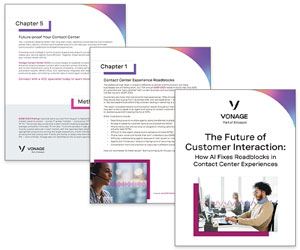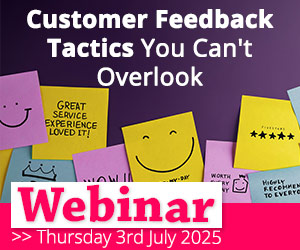Our panel highlights the ‘must have’ features to look out for when buying a Workforce Management (WFM) solution.
Self-Serve Tools Can Reduce the Burden on Resource Planners
Agent self-service tools can empower agents to act and make appropriate requests and changes.
This can help to reduce the administrative burden on the supervisor or resource planner.
Console for Compliance and Adherence

Any WFM solution needs to supply an agent console that reflects compliance and adherence. However, technology needs to be coupled with proactive policies and a cultural approach to succeed.
It helps agents to quickly understand the impact that their individual adherence decisions, such as being back on time from a break or not, have on increasing colleague workload and reducing customer satisfaction.
The desktop and dashboard tools can assist with an objective real-time measure of how the removal of even one agent can impact service delivery around service levels, speed of answer and ultimately the customers’ experience.
The visible real-time data highlights the impact on customer experience. This knowledge has a profound impact on agents’ compliance, which improves teamwork and load balancing for everyone.
Agents begin to self-manage, which boosts team morale. In comparison, the use of agent adherence as a punitive measure (sometimes called the ‘big stick’ method) disheartens agents and does little to foster organisational success.
Contributed by: Richard Farrell at Netcall
Don’t Get ‘Cloud’ Mixed Up With ‘Hosting’
Cloud applications can offer high functionality at low cost and low risk – but don’t get ‘cloud’ mixed up with ‘hosting’.
There should be no capex to budget for, no software to install and no need for servers or a heavy IT project. There should be no set-up fees and no lengthy minimum contract term. Training should be free-of-charge and product updates constantly implemented without any effort on your part.
You should also be able to check that you can flex capacity – and spend – up and down based on business need.
Your Solution Should Be Secure and Compliant
Insist on state-of-the-art data centre security and SSL encryption between your site and the cloud. Look for SOC 1 Type II, ISO 27001 and/or PCI DSS Level 1.
Cloud providers should also comply with all relevant data privacy regulations, e.g. the EU Data Protection Act 1998.
Mobile Features Need to be Fully Responsive on Any Chosen Device

Your WFM solution needs to be mobile-friendly. It should also be adaptable to accommodate the presentation and level of detail, so that it is genuinely usable on a device with a small screen.
The fact that a solution offers a browser-based agent portal does not necessarily mean that the portal can be used properly, e.g. on an iPhone.
It is vital that an agent portal is responsive to the type of device (PC, Mac, smartphone or tablet), screen size and operating system, so that it is easily accessible and enables mobile workers to see their schedules, request holidays, do shift swaps and more on the go.
This can improve your agents’ motivation, work-life balance, adherence to your schedules and the service level of your contact centre.
Forecasting Across All Channels
Your solution should give you the ability to forecast, schedule and manage the staffing requirements for each type of contact across all channels, for example, calls, emails, webchats and social media.
An Agent Portal that Enables Time Recording
Look for a solution with an agent portal that enables time recording.
This will enable you to apply the same rigour to managing schedule adherence for all channels, not just for calls.
Contributed by: Chris Dealy at injixo
The Ability to View Shifts Should Be a Prerequisite For Any Solution
Self-service via a portal, with the ability to view shifts and make requests, should be a prerequisite for any solution.
With the ever increasing need for providing lifestyle scheduling, a full range of engagement capabilities should be number one on the requirements list.
Self-service functionality always receives positive feedback from the employees and helps the business to adapt to the changes WFM brings.
Multichannel Forecasting For Immediate and Delayed Response Items
Any WFM application should be able to provide multichannel forecasting for both immediate response and delayed response items.
Immediate response items such as calls and webchat have a different resourcing requirement from the delayed response items such as email and back-office processes.
The solution should take this into consideration to provide a true multichannel capability.
The Ability to Link WFM Data to Marketing Data
WFM is not a standalone product. It can be the key driver for tracking operational and agent performance by linking to other applications such as CRM or business intelligence tools.
Your WFM solution should provide dashboards and KPIs for fast, intuitive reporting. Weighted scorecards are also a possibility, taking quantitative measures such as calls handled and comparing this to qualitative KPIs such as quality scores.
Other uses include linking WFM data to marketing data to provide insight into response rates for mailings or campaigns.
Contributed by: Tracy McAvoy at Business Systems
Model Emergency ‘What If’ Resource Plans For Crisis Situations
Key to the whole concept of WFM is the ability to forecast and schedule your resource requirements.

Typically, this will involve assessing historical analytic data and projecting likely future interaction volumes by media type and the resources you will require at any given time – taking into account known variables, like increased absenteeism on a Monday morning or higher levels of holidays during the summer months.
Linked to this kind of real-time resource plan, we are seeing increasing self-service capability for employees to book their own holidays or schedule specific shifts or start/finish times, particularly where the contact centre has been virtualised and agents may be working from home.
In addition, there is growing capability for businesses to scope and model emergency ‘what if’ resource plans for crisis situations.
Contributed by: Jeremy Payne at Enghouse Interactive
Automated Training Processes Can Enable Businesses to Lower Costs

Companies should also look to implement training software as part of a well-rounded workforce management solution.
Using automated training processes can enable businesses to lower costs and improve organisational skills. Such software will help identify the skills and profiles of top performers, so that training can be provided to lower performers.
Other helpful tools for workforce management optimisation include advanced reporting and dashboards for measuring employees’ time against performance.
Contributed by: Keith Wilkinson at Genesys
Transparent Systems Can Forecast Months in Advance
Transparent workforce systems eliminate headaches for the WFM professional by forecasting months in advance – not days or weeks. Managers need complete visibility into the schedule, shift changes, and time-off requests.
A system that boasts transparency has the ability to account for seasonality and changes in the workforce in its algorithm – automating systems that were once time-consuming manual processes.
Drag and Drop Agents From One Service Queue to Another
Consider the depth of insight the solution offers. Managers who can monitor adherence in real time can change behaviour on the spot and address issues proactively as they arise.
In a contact centre, every day is different. Issues and challenges arise as the day goes on and managers need to be responsive.
It should be as easy as a drag and drop to move agents from one service queue to another to alleviate a burst in demand.
Reward Agents For a Job Well Done and Enable Them to Share Their Ideas

Employees won’t be able to do their best work if they are distracted and not engaged at their desk.
Consider a WFM solution that allows your organisation to motivate employees by rewarding them for a job well done or taking undesirable shift with shift-bid preference.
- Employees should be able to share ideas through elements in the system like blogs and wikis.
- Managers should be able to get to the bottom of a service issue with a simple poll.
- Your system should allow employee ownership of scheduling while ensuring organisational staffing needs are met.
Keeping employees informed and focused positively impacts your team and ultimately your customer.
With thanks to Paige McCaleb at NICE Systems
Real-Time Adherence Can Detect Why an Individual is Not Performing
One of the most valuable features of a WFM system is real-time adherence (RTA). It can highlight both the accuracy of scheduling/forecasting and the performance of agents.
With a glance at the system, a team leader can be alerted to why an individual is not performing, based on statistics such as ‘calls per hour’ and ‘average handling time’. You should look for an easy-to-use solution that provides actionable historical data.
For success, you need to ensure that both your automated call distributor (ACD) and WFM solution will be able to communicate with each other. Integration can often be a painful experience with multiple vendors.
Tracking Skills-Based Routing in Both the ACD and WFM
Your ACD is responsible for the routing of your calls. But, if your WFM cannot replicate the routing strategy through skills, how can it support you in the best roster production?
Using a set of routing rules, your WFM should be able to determine what effect the skills assignments will have on service levels, call answer rates and agent utilisation. It can highlight skill gaps, allowing you to create training plans and increase the capabilities of the agents.
Create Forecasts For Specific Days, Special Events and Strategic Planning
Accurate forecasting is the critical first step in workforce management. It is important that your WFM solution integrates seamlessly with your dialler or ACD and uploads historical data directly from the database.
It’s also important to look for a solution with forecasting engines that allow you to create forecasts for specific days, special events and strategic planning.
The Ability to Adapt to New Channels in the Future
You need to ensure that your forecasting tools allow you to expand and develop as contact channels evolve in the future.
Take social media, for example. A typical Erlang calculator is not going to be able to deal with concurrency and pause times.
With thanks to Sian Ciabattoni at Noble Systems
Changes in Your System Should Be Effective Immediately

With real-time adherence, the changes you make in your workforce management system should be effective immediately.
This will enable managers to check their agents’ progress in relation to what is scheduled – and be aware of when they are on breaks.
If your agents are enjoying a quiet period, you can then schedule training or switch their focus to other channels – with agents receiving notification of the changes to their schedule.
Full Integration Can Eliminate Data Transfers
Through full integration, you can ensure there is no need for importing, exporting or uploading data overnight or every fifteen minutes – and that working with spreadsheets is a thing of the past.
Also ensure you have ‘one truth’ for skills management between WFM and the ACD. One platform means having to configure skills, routing, shifts and all other decisions only once.
With thanks to Jonathan Gale at NewVoiceMedia
Your WFM Should Be Integrated With Telephony and Payroll Systems
Your WFM solution should be fully integrated with other systems, including telephony, any workflow distribution and HR/payroll systems.
You must also have confidence with the data reported by WFM and understand any inconsistencies compared with other reports.
Training and Post-Implementation Support Are Crucial to WFM Success
It is also crucial that you have the right training to support the use of any WFM, as well as a solid understanding of general resource and operational planning.
Finally, ensure that you receive post-implementation support several months down the line.
Our 2010 best practice research showed that only 15% of users were fully confident in their WFM system.
Full visibility of Your Workforce Should Include Training and Sickness

Your WFM solution should provide full visibility of your resources, resulting in better resourcing and operational decisions.
This includes different types of absences (adherence, annual leave, sickness, etc.), as well as offline activities such as team meeting, 1 to 1s and training.
Measure and Review Scheduling Effectiveness
Really consider people in respect of their choices for flexible working patterns, improved planning of training time and recruitment strategies to support your organisation’s goal.
By measuring and reviewing scheduling effectiveness you will be able to start producing different flexibility options.
With thanks to Phil Anderson at The Forum
Agents Should Be Able to View their Own Scorecards Via a Mobile App
Effective WFM is all about agent engagement, so it makes sense to buy a WFM solution that is accessible as possible.

Given the general age demographic of agents, it’s worthwhile looking for a tool that is also optimised for mobile access, enabling agents and their managers to respond and take action from the convenience of their own mobile devices.
Via a standard mobile app, agents can view their own scorecards and KPI progress, check their daily and weekly schedules and also submit time-off or holiday requests.
Managers and team leaders can also use their mobile devices to monitor team schedules as well as approve time-off and holiday requests.
Budget For Top-Up Training on Getting the Best Out of Your WFM
It’s really important to make sure that your tool remains correctly configured and deployed throughout its lifetime – and that you retain the right staffing and expertise in-house to keep your WFM performing optimally.
That’s why we recommend that organisations also budget for a couple of days additional training and configuration each year.
This can help to make sure that they continue to have the right skills and expertise in place for continued WFM operational success.
With thanks to Steve Chaplin at Sabio
Seamless Integration With Your Cloud Contact Centre
Workforce management is the natural extension of cloud contact centre management software – and should be integrated seamlessly with it, rather than bought ‘stand-alone’ (with all the problems that brings of linking with legacy systems).
This should work with other tools such as intelligent call/contact routing, a dynamic agent management system and also quality monitoring to keep on top of measuring (and reacting to) customer experience.
Modelling and Predictive Analysis Based on Past History
Most organisations will now be grappling with the need to match resources against not only call-handling peaks and troughs but also other channels such as webchat, email and social media.
For this, you’ll need modelling and predictive analysis based on past history, as well as the ability to input variables such as changes in marketing plans, forecasts of future demand and other business changes like new product launches.
Web-based reporting is also important – both real-time and historic – so you can manage the system proactively and intelligently.
Agent Management Software That Allows For the Unplanned
Predictive analytics can never be totally accurate, so you’ll still need to have call/contact distribution and agent management software that allows for the unplanned.
For example, making sure that available agents are found in logical search sequence to service a customer outside of the initial parameters set (such as someone in admin who used to work in sales, who can be brought into a group as backup).
You’ll also want the ability to make real-time changes to which groups agents are in, such as channel or skills-based, in case you need to react to unexpected changes in demand and need to switch resources around.
With thanks to Simon Beeching at Syntec
Fine-Tune in Line With Real-Time External Changes

A WFM solution needs to be flexible and easy to adjust and fine-tune with alterations to the forecast being made in line with any real-time external changes.
Ensure your solution can take into account seasonal call volumes and special days – and that your roster can quickly and easily be changed or updated, assigning and reassigning agents where necessary.
With thanks to David Ford at Magnetic North
What do you think are the ‘must have’ features of a workforce management (WFM) solution?
Author: Megan Jones
Published On: 25th Feb 2015 - Last modified: 13th Jan 2025
Read more about - Technology, Business Systems, Chris Dealy, David Ford, Enghouse Interactive, Genesys, Intrado, Jeremy Payne, Jonathan Gale, NiCE, Noble Systems, Peopleware, Phil Anderson, Rob Wilkinson, Sabio, Syntec, The Forum, Vonage, Workforce Management (WFM)









































Having recently been through a major WFM procurement process I would say, as a buyer, what I noticed were:
– the functionality is pretty much indistinguishable between solutions
– the user experience is OK but not great for all systems
– however, the killer point for me is that no WFM systems are ready for the new economy. The systems are already planner focussed; they now need to put the same effort into the agents – employment flexibility, agent preferences and apps for employees to directly access the system.
Excellent collection of must-have tips for anyone in the market for a WFM solution.
I would also add Agent Availability and Shift Preferences.
Agents with commitments (education, family, etc.) can be much more content with the extra effort to schedule around their availability.